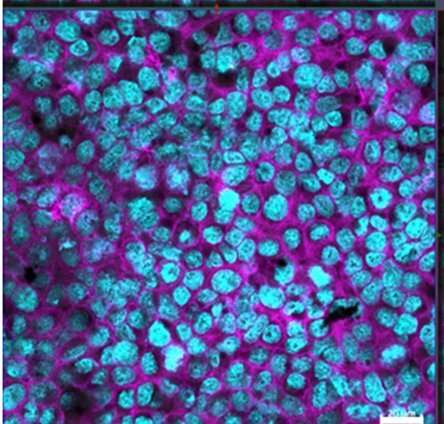This article has been reviewed according to Science X's editorial process and policies. Editors have highlighted the following attributes while ensuring the content's credibility:
fact-checked
trusted source
proofread
Incineration of graphene-containing plastics: Health risk of graphene residues investigated in 3D lung model

Due to its exceptional properties, graphene is now added to a wide range of plastics. The carbon-based material improves, for instance, the conductivity and stability of composites.
Empa researchers are currently investigating the health risks of these comparatively new composite materials in several studies. The most recent are looking at the residues of graphene nanoplatelets that can be produced after the composites are burned in waste incinerators or in a fire accident.
A realistic lung model in a cell culture dish
Since the human organism is most likely to come into contact with graphene particles through the respiratory tract, the researchers used the 3D lung model developed at Empa with cell cultures for toxicity tests. The team led by Peter Wick of Empa's Particles-Biology Interactions laboratory in St. Gallen exposed lung cells to residues from the combustion of composite materials containing graphene nanoplatelets.
To estimate the amount of graphene particles to which humans are typically exposed as realistically as possible, a team led by Jing Wang of Empa's Advanced Analytical Technologies laboratory examined and quantified the combustion residues of the graphene composites. Researchers from Empa's Advanced Fibers Laboratory were also involved in the interdisciplinary project.
No acute damage
Using this data, the team subjected the 3D lung model to realistic conditions so that predictions could be made about the acute toxicity of graphene nanoplatelets after combustion. The results showed that combustion residues of plastic resins without graphene elicit well-known adverse reactions indicating a health risk. However, after contact with the graphene nanoplatelet residues, there was no further evidence of acute damage to lung cells, such as inflammatory reactions, oxidative stress or even cell death.
In an earlier study, Empa researchers had already been able to show that the health risks of graphene dust produced by abrasion from polymer composites are negligible. The effects of prolonged exposure to graphene nanoparticles will now be investigated in long-term studies.





















